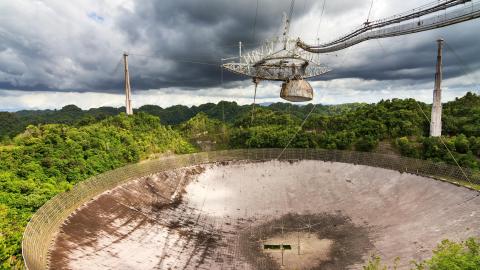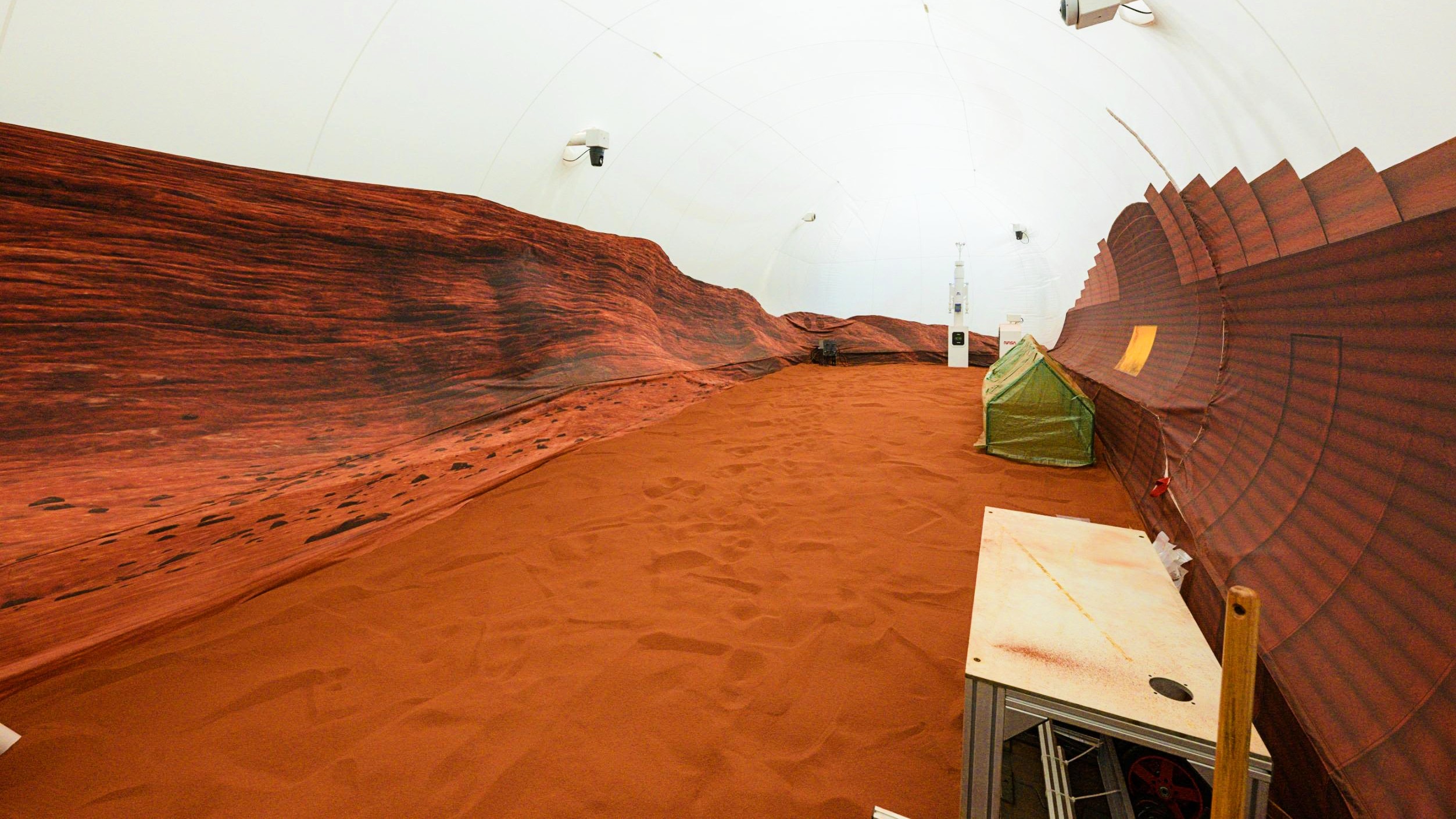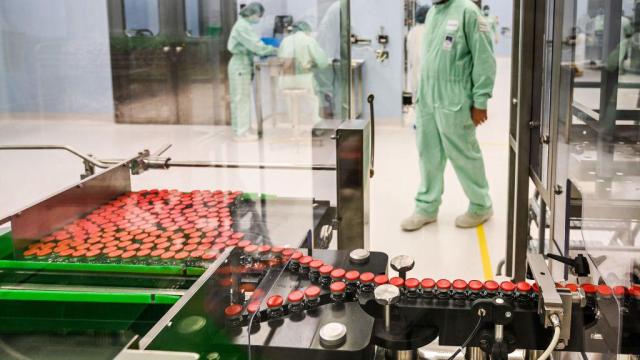The Arecibo telescope has collapsed: A look at its 57-year history

- The Arecibo Observatory’s main telescope collapsed on Tuesday morning.
- Although officials had been planning to demolish the telescope, the accident marked an unceremonious end to a beloved astronomical tool.
- The Arecibo radio telescope has facilitated many discoveries in astronomy, including the mapping of near-Earth asteroids and the detection of exoplanets.
The Arecibo Observatory in Puerto Rico suffered a fatal blow Tuesday when a 900-ton receiver platform fell into the observatory’s iconic 1,000-foot dish. Officials had already planned to dismantle the observatory due to its extensive damage: It was battered by Hurricane Maria in 2017; multiple support cables broke in August and November; and a recent safety report found that attempting to repair the telescope would endanger workers.
The collapse wasn’t exactly surprising.
“It sounded like a rumble. I knew exactly what it was,” Jonathan Friedman, a senior research associate at the observatory, told The Associated Press. “I was screaming. Personally, I was out of control…. I don’t have words to express it. It’s a very deep, terrible feeling.”
The instrument platform of the 305m telescope at Arecibo Observatory in Puerto Rico fell overnight. No injuries were reported. NSF is working with stakeholders to assess the situation. Our top priority is maintaining safety. NSF will release more details when they are confirmed. pic.twitter.com/Xjbb9hPUgD
— U.S. National Science Foundation (@NSF) December 1, 2020
Twittertwitter.com
Still, for the scientific community, it was a disappointingly unceremonious end to a beloved tool that facilitated astronomical discoveries for 57 years.
“We are saddened by this situation but thankful that no one was hurt,” Sethuraman Panchanathan, the foundation’s director, said in a statement. “Our focus is now on assessing the damage, finding ways to restore operations at other parts of the observatory, and working to continue supporting the scientific community, and the people of Puerto Rico.”
The Arecibo Observatory’s main telescope was the world’s largest radio telescope for nearly 50 years, until China built the 1,650-foot-long Aperture Spherical Radio Telescope in 2016. The observatory attracted tens of thousands of visitors annually, some of whom likely first saw the telescope’s iconic dish depicted in movies like “Goldeneye,” “Species” and “Contact.”
Arecibo telescopeBradley Rivera via twitter.com
In 1963, the concave dish was built into a natural sinkhole on the northern coast of Puerto Rico. The location was picked because it was near the equator, providing scientists a clear view of planets passing overhead, and also of the ionosphere, which is the uniquely reactive layer of Earth’s upper atmosphere where the northern lights form.
Since its construction, scientists have used the Arecibo telescope to map near-Earth asteroids, detect gravitational waves, study pulsars, detect exoplanets and search for alien civilizations, among other projects. Here’s a brief look at some of the discoveries and accomplishments made using the Arecibo telescope:
- 1964: Astronomer Gordon Pettengill discovers that Mercury’s rotation period is 59 days, significantly shorter than the previous prediction of 88 days.
- 1974: Physicists Russell Alan Hulse and Joseph Hooton Taylor Jr. discovers the first binary pulsar, for which they won a Nobel Prize in Physics.
- 1974: Scientists use the telescope to transmit the “Arecibo message” to globular star cluster M13. The message, when translated into image form, contains basic information about humanity and human knowledge: the numbers one to 10, a map of our solar system, an illustration of a human being, and the atomic numbers of certain elements.
- 1989: Scientists use the telescope to image an asteroid for the first time.
- 1992: Astronomers Alex Wolszczan and Dale Frail become the first to discover exoplanets.
Whether you know the Arecibo Observatory in Puerto Rico from pop culture (like Contact and Golden Eye) or its incredible scientific contributions (like imaging asteroids and discovering exoplanets) it has played an important role in astronomy. pic.twitter.com/QZ16ptufnQ
— AirSpace from the National Air and Space Museum (@AirSpacePod) November 30, 2020
Twittertwitter.com
More recently, the Arecibo was often used to track nearby asteroids, such as asteroid 2012 DA14, which passed within 17,200 miles of Earth in 2013. While other observatories around the world will be able to continue much of the work conducted at the Arecibo Observatory, some in the scientific community have suggested the U.S. should look into building another radio telescope.
“This is a stunning loss for our science capability,” Justin Kugler, an aerospace engineer, said on Twitter. “The United States needs to create a plan for a successor radio telescope that builds on the heritage of Arecibo and honors the commitment of Puerto Rico over these many years.”
But it’s unclear how or if a new telescope project would be funded by the U.S. The director of the Arecibo Observatory, Francisco Córdova, said The National Science Foundation didn’t have enough money to install a new telescope at the site before the old one collapsed, according to The Associated Press. As such, funding for a new telescope project would have to come from Congress.





